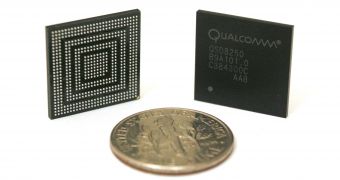TSMC has long been a good FAB partner for Nvidia and ATi’s GPUs. But, right now, Qualcomm is reportedly moving a considerable amount of its production over to GlobalFoundries.
The diversity of designs the Taiwanese FAB leader was able to manufacture was so great that even AMD asked them to manufacture APUs for them back in the day, when Global Foundries, AMD’s old FAB and now their main FAB partner, was still working on their 28 nm line.
On today’s TSMC 28 nm process, the yields are not exactly catastrophic. They are not perfect and they don’t need to be. Sure, Nvidia loses a huge chunk of a wafer when a GK 104 die is malfunctioning, but that’s not Qualcomm’s problem.
Qualcomm needs chips with small dies and, if one or more are not working, there’s not as much wafer really going to waste like in the case of large GPUs like Nvidia’s.
Currently Qualcomm is being challenged by SAMSUNG and the other ARM designers out there.
Sure there is much talk about the great performance of the dual core A15 designs and both companies have a dual core A15 ARM chip out right now, but SAMSUNG also has a quad core A15 design coming, and so does Texas Instruments, and probably Nvidia and others.
SAMSUNG has a huge advantage over Qualcomm; they have their own FABs so this means that Qualcomm must ensure high capacity from its FAB partner, not only for their current dual core A15 design, but for their up-and-coming quad core A15 with PowerVR GPU.
If the situation stayed just like now for a while, maybe Qualcomm would be satisfied with TSMC, but they want more capacity and capacity is something TSMC can’t offer them without letting other customers starve.
Add this to the fact that GlobalFoundires’ 28nm process, although late to the market, is obviously so good that AMD has started manufacturing their very complex APUs with high working frequencies.
Therefore, it’s clear why Qualcomm wants to move to GlobalFoundries: ATIC’s company has manufacturing capacity to spare and it is looking for customers like Qualcomm.
Qualcomm’s CPUs can really benefit from a better 28 nm process as leakage current is not something you desire in a phone chip. Also, the increased complexity of a quad core A15 ARM design will probably double the wasted wafer space if they just stick to TSMC’s current 28 nm process.
So it is about bad yields, but not as much as it is about the desire for more capacity and the temptation of a better 28 nm process represents for Qualcomm.

 14 DAY TRIAL //
14 DAY TRIAL //